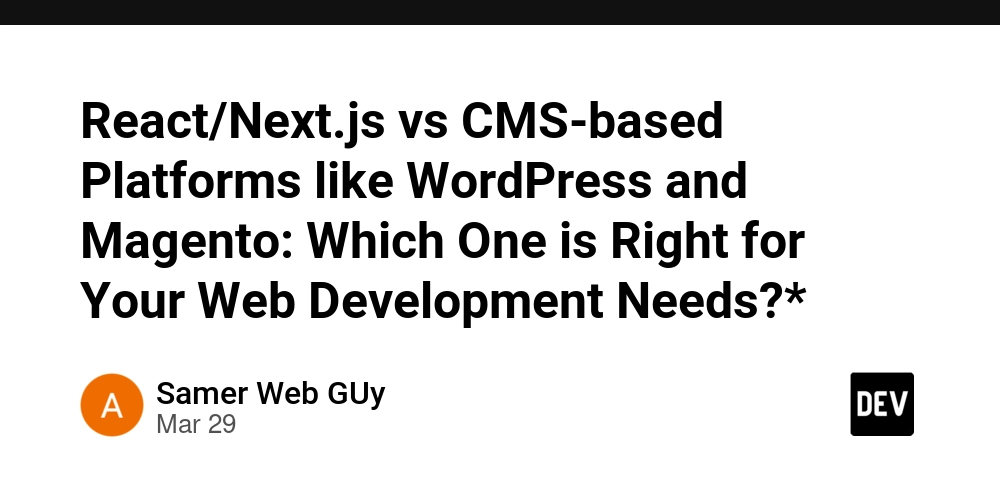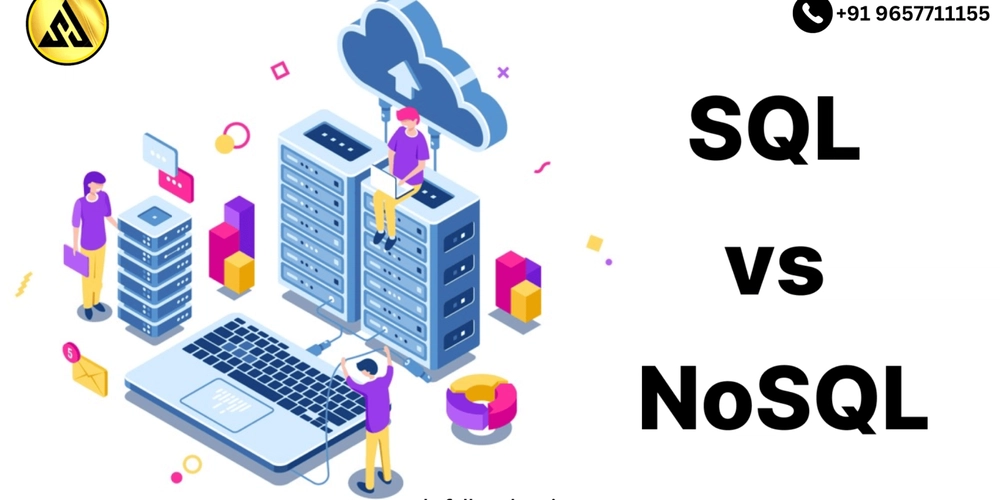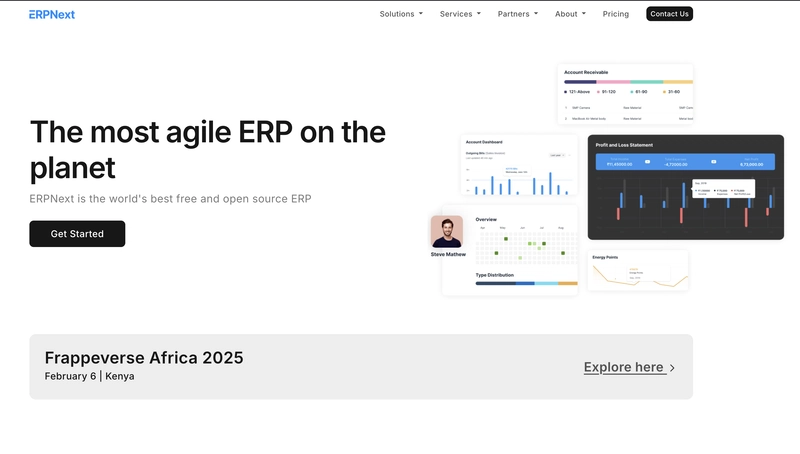React/Next.js vs CMS-based Platforms like WordPress and Magento: Which One is Right for Your Web Development Needs?*
In today’s digital age, creating a website is more than just putting together a few pages of text and images. A website is often the first touchpoint for potential customers, so businesses and organizations need to ensure that it’s not only functional but also visually appealing, easy to navigate, and scalable. When it comes to web design and development there are various approaches a web development company, may use, there are a variety of approaches to building and managing a websites. Two popular choices are using modern JavaScript frameworks like React and Next.js or relying on CMS-based platforms like WordPress and Magento. Both have their advantages and drawbacks, and the right choice will depend on your specific needs, skillset, and goals. In this post, we’ll compare the key features of React/Next.js and CMS platforms like WordPress and Magento for web design and development, evaluating their pros and cons, and helping you decide which one is best suited for your web development or design project. What is React/Next.js? React is an open-source JavaScript library used for building user interfaces, particularly for single-page applications (SPAs). React allows developers to build dynamic and highly interactive UIs that update seamlessly as the user interacts with them. It was developed by Facebook and has become one of the most popular front-end libraries in the web development ecosystem. Next.js is a framework built on top of React, designed to offer a more feature-complete solution for building full-stack React applications. It brings features like server-side rendering (SSR), static site generation (SSG), and automatic code splitting to React projects, making it a powerful tool for developers looking to build fast and scalable web applications. What are WordPress and Magento? WordPress is one of the most widely used content management systems (CMS) for building websites. It powers over 40% of all websites on the internet, from blogs and personal portfolios to large e-commerce sites. WordPress is known for its ease of use, vast ecosystem of plugins, and a robust community of developers and designers. Magento, now owned by Adobe, is a powerful and flexible open-source e-commerce platform designed for building online stores. It is known for its scalability, advanced e-commerce features, and customization options. Magento is commonly used by large businesses and enterprises to create complex online retail platforms. Pros and Cons of React/Next.js Pros Performance One of the biggest advantages of React and Next.js is their focus on performance. Next.js, in particular, offers several features designed to optimize speed, such as server-side rendering and static site generation. This allows web pages to load faster, which improves the user experience and can positively impact search engine rankings. Scalability React and Next.js are highly scalable, meaning they are ideal for building large applications that need to grow over time. Whether you are building a complex web app or an enterprise-level platform, these tools allow for easy integration with other technologies, microservices, and APIs. Component-Based Architecture React follows a component-based architecture, meaning the user interface is divided into smaller, reusable components. This makes the development process more organized, easier to maintain, and allows for faster development as components can be reused across multiple pages. SEO Optimization Next.js provides powerful server-side rendering (SSR) and static site generation (SSG), making it easier to optimize your site for search engines. Websites built with React and Next.js can rank well on search engines because they deliver content to users and search engine crawlers quickly. Flexibility and Customization React and Next.js offer a high degree of flexibility, allowing developers to build anything from small websites to complex web applications. With React’s large ecosystem of libraries and Next.js’ built-in features, developers can fine-tune the architecture of their application to fit specific needs. Cons Learning Curve One of the biggest challenges with React and Next.js is the learning curve, especially for beginners. Developers need to understand JavaScript, React’s state management, JSX (JavaScript XML), and the Next.js framework. This can make it more difficult for non-developers or designers to get started without some technical assistance. More Development Time While React and Next.js give developers more control, they also require more development time. For example, creating a blog, portfolio site, or e-commerce store with React or Next.js would involve building components, routing, setting up a backend, and integrating with APIs. This is in contrast to a CMS like WordPress, where much of the functionality is built-in. Maintenance and Updates With React/Next.js, you’re responsible for maintaining and updating the cod

In today’s digital age, creating a website is more than just putting together a few pages of text and images. A website is often the first touchpoint for potential customers, so businesses and organizations need to ensure that it’s not only functional but also visually appealing, easy to navigate, and scalable. When it comes to web design and development there are various approaches a web development company, may use, there are a variety of approaches to building and managing a websites. Two popular choices are using modern JavaScript frameworks like React and Next.js or relying on CMS-based platforms like WordPress and Magento. Both have their advantages and drawbacks, and the right choice will depend on your specific needs, skillset, and goals.
In this post, we’ll compare the key features of React/Next.js and CMS platforms like WordPress and Magento for web design and development, evaluating their pros and cons, and helping you decide which one is best suited for your web development or design project.
What is React/Next.js?
React is an open-source JavaScript library used for building user interfaces, particularly for single-page applications (SPAs). React allows developers to build dynamic and highly interactive UIs that update seamlessly as the user interacts with them. It was developed by Facebook and has become one of the most popular front-end libraries in the web development ecosystem.
Next.js is a framework built on top of React, designed to offer a more feature-complete solution for building full-stack React applications. It brings features like server-side rendering (SSR), static site generation (SSG), and automatic code splitting to React projects, making it a powerful tool for developers looking to build fast and scalable web applications.
What are WordPress and Magento?
WordPress is one of the most widely used content management systems (CMS) for building websites. It powers over 40% of all websites on the internet, from blogs and personal portfolios to large e-commerce sites. WordPress is known for its ease of use, vast ecosystem of plugins, and a robust community of developers and designers.
Magento, now owned by Adobe, is a powerful and flexible open-source e-commerce platform designed for building online stores. It is known for its scalability, advanced e-commerce features, and customization options. Magento is commonly used by large businesses and enterprises to create complex online retail platforms.
Pros and Cons of React/Next.js
Pros
Performance
One of the biggest advantages of React and Next.js is their focus on performance. Next.js, in particular, offers several features designed to optimize speed, such as server-side rendering and static site generation. This allows web pages to load faster, which improves the user experience and can positively impact search engine rankings.Scalability
React and Next.js are highly scalable, meaning they are ideal for building large applications that need to grow over time. Whether you are building a complex web app or an enterprise-level platform, these tools allow for easy integration with other technologies, microservices, and APIs.Component-Based Architecture
React follows a component-based architecture, meaning the user interface is divided into smaller, reusable components. This makes the development process more organized, easier to maintain, and allows for faster development as components can be reused across multiple pages.SEO Optimization
Next.js provides powerful server-side rendering (SSR) and static site generation (SSG), making it easier to optimize your site for search engines. Websites built with React and Next.js can rank well on search engines because they deliver content to users and search engine crawlers quickly.Flexibility and Customization
React and Next.js offer a high degree of flexibility, allowing developers to build anything from small websites to complex web applications. With React’s large ecosystem of libraries and Next.js’ built-in features, developers can fine-tune the architecture of their application to fit specific needs.
Cons
Learning Curve
One of the biggest challenges with React and Next.js is the learning curve, especially for beginners. Developers need to understand JavaScript, React’s state management, JSX (JavaScript XML), and the Next.js framework. This can make it more difficult for non-developers or designers to get started without some technical assistance.More Development Time
While React and Next.js give developers more control, they also require more development time. For example, creating a blog, portfolio site, or e-commerce store with React or Next.js would involve building components, routing, setting up a backend, and integrating with APIs. This is in contrast to a CMS like WordPress, where much of the functionality is built-in.Maintenance and Updates
With React/Next.js, you’re responsible for maintaining and updating the codebase. This can be an advantage if you need full control over your site, but it also means that you have to regularly keep up with updates, security patches, and performance optimizations.
Pros and Cons of WordPress and Magento
Pros
Ease of Use
One of the biggest selling points of WordPress is its user-friendly interface. Even non-technical users can easily create and manage a website using WordPress. It offers a visual editor, drag-and-drop page builders, and easy-to-manage content, making it accessible to small business owners, bloggers, and content creators.Rapid Development
For most types of websites, WordPress allows you to get up and running quickly. With thousands of pre-built themes and plugins available, you can set up a website with minimal effort. This makes WordPress a great choice for simple blogs, small businesses, or portfolio websites that don’t require custom development.Content Management
WordPress excels at content management. With its easy-to-use admin panel, you can manage blog posts, pages, media, and even products (if you are using WooCommerce for e-commerce) with ease. It also allows for hierarchical content structures, custom post types, and taxonomies.Community and Ecosystem
WordPress has a large, active community of developers, designers, and support forums. This means you can find plugins, themes, and solutions to almost any problem you encounter. Additionally, there is a wealth of tutorials, courses, and resources available online.Cost-Effective
For smaller websites or businesses, WordPress can be a highly cost-effective solution. With affordable hosting options and free or low-cost themes and plugins, you can create a functional and attractive website on a budget.Magento’s Power in E-commerce
If you're building an online store, Magento offers a full suite of e-commerce tools to manage products, inventory, customer orders, and payments. It's highly customizable, scalable, and can handle large numbers of transactions, making it ideal for businesses with complex e-commerce needs.
Cons
Performance Issues
WordPress and Magento websites can become slow and inefficient as they grow, especially if the site is heavily reliant on plugins or complex themes. This can hurt both the user experience and SEO. With Magento, performance optimizations often require expertise and significant resources.Security Vulnerabilities
WordPress websites are a popular target for hackers due to their widespread use. Keeping your WordPress site secure requires regular updates and monitoring. Similarly, Magento’s open-source version can also be a target for cyberattacks, and securing it requires a proactive approach.Customization Limitations
While WordPress and Magento offer a range of customization options, they can become limited if you require specific functionalities or highly unique designs. For more complex features, you may need to invest in custom development or hire a developer to tailor the site to your needs.Scalability Issues
While WordPress can be scaled to accommodate growing websites, it often requires additional plugins, optimization, and sometimes custom development to ensure the site can handle increased traffic and content. Magento is highly scalable for e-commerce, but it can be difficult to manage if you're not well-versed in the platform.
React/Next.js vs CMS: When to Use Which?
-
Use React/Next.js If:
- You are building a dynamic web application (e.g., social media platforms, dashboards, SaaS products).
- SEO performance and speed are top priorities.
- You need complete control over the architecture, UI, and user experience.
- You’re willing to invest more time and effort into the development process for a highly customized site.
- You need scalability for an enterprise-level application or web app.
-
Use WordPress/Magento If:
- You need a simple website or blog that can be launched quickly.
- You are managing content-heavy websites and want an easy-to-use platform for content creators.
- You need an e-commerce solution, with Magento being ideal for larger, more complex stores.
- You don’t have access to a development team and prefer an easier-to-manage site.
- You are on a tight budget and want an out-of-the-box solution for most of your needs.
Conclusion
Both React/Next.js and WordPress/Magento are powerful tools, but they cater to different needs. React and Next.js are more suited for web applications or highly customized websites where performance and flexibility are key. On the other hand, WordPress and Magento provide more turnkey solutions for content-heavy sites and e-commerce platforms, making them ideal for those who need a quick, cost-effective, and easy-to-manage website.
Ultimately, the right choice depends on your project’s specific needs, your technical resources, and the long-term goals of your website. If you have the technical expertise and need a highly customized site or web app, React and Next.js may be the way to go. However, if you want a faster, user-friendly solution for content management or e-commerce, a CMS like WordPress or Magento might be more appropriate.






















































.jpg)
%20Abstract%20Background%20112024%20SOURCE%20Amazon.jpg)





















































































































![[The AI Show Episode 142]: ChatGPT’s New Image Generator, Studio Ghibli Craze and Backlash, Gemini 2.5, OpenAI Academy, 4o Updates, Vibe Marketing & xAI Acquires X](https://www.marketingaiinstitute.com/hubfs/ep%20142%20cover.png)































































































































![From drop-out to software architect with Jason Lengstorf [Podcast #167]](https://cdn.hashnode.com/res/hashnode/image/upload/v1743796461357/f3d19cd7-e6f5-4d7c-8bfc-eb974bc8da68.png?#)




































































































.png?#)





.jpg?#)
































_Christophe_Coat_Alamy.jpg?#)










































































































![Rapidus in Talks With Apple as It Accelerates Toward 2nm Chip Production [Report]](https://www.iclarified.com/images/news/96937/96937/96937-640.jpg)









































































































































